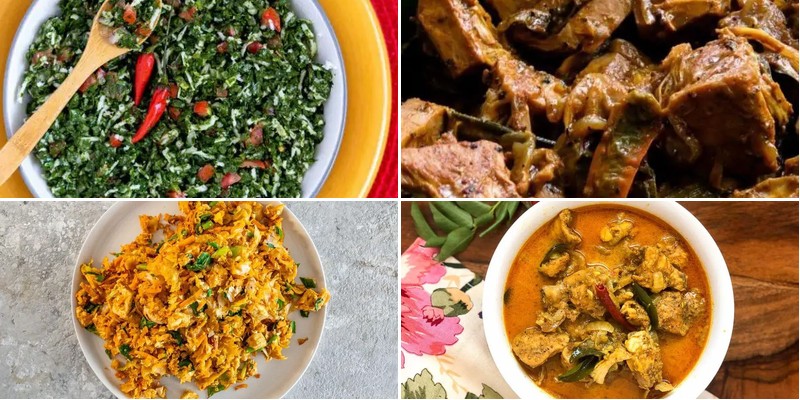Zesty, vibrant, and bursting with flavor—Sri Lankan cuisine is a hidden gem waiting to transform your kitchen. From fragrant curries to spicy sambols, these 20 authentic recipes bring the island’s rich culinary traditions right to your home. Whether you’re craving quick dinners or exotic comfort food, get ready to delight your taste buds and impress your family. Dive in and discover your new favorite dishes!
Sri Lankan Fish Ambul Thiyal (Sour Fish Curry)
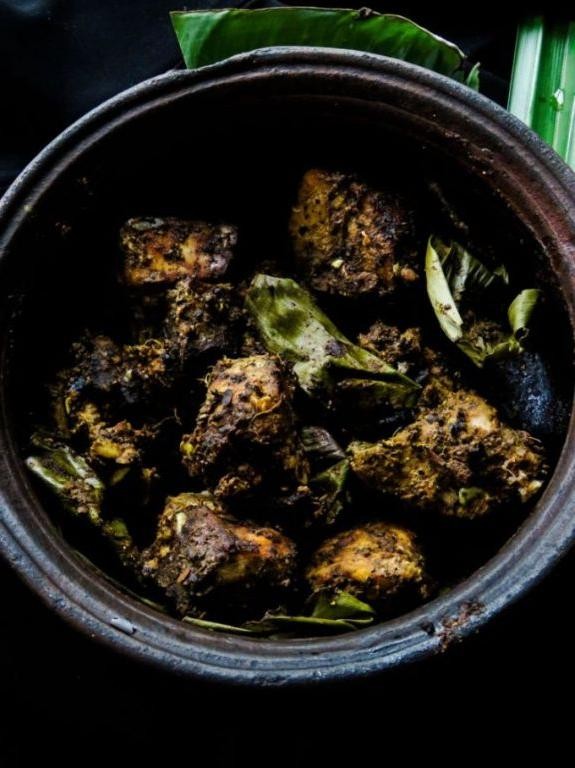
There’s something quietly comforting about a dish that carries the weight of tradition, and this sour fish curry from Sri Lanka feels like a whispered story from the coast. The sharp, tangy notes of goraka and the warmth of spices wrap around firm fish steaks, creating a meal that’s both bold and deeply soothing.
2
servings15
minutes40
minutesIngredients
– A couple of firm white fish steaks (about 1 pound total)
– A generous splash of water (about 1 cup)
– A small handful of dried goraka pieces (or 2 tbsp tamarind paste if you can’t find goraka)
– A heaping tablespoon of roasted curry powder
– A teaspoon of crushed black peppercorns
– A pinch of turmeric powder (about ½ tsp)
– A few thin slices of ginger
– A couple of garlic cloves, lightly smashed
– A sprig of curry leaves (fresh if you have them)
– A slice of pandan leaf (optional, but lovely for aroma)
– A dash of salt (about 1 tsp)
Instructions
1. Rinse the fish steaks under cold water and pat them completely dry with paper towels.
2. In a medium bowl, combine the goraka pieces (or tamarind paste), roasted curry powder, crushed black peppercorns, turmeric, and salt.
3. Rub this spice mixture evenly over all sides of the fish steaks, coating them thoroughly.
4. Place the seasoned fish in a clay pot or heavy-bottomed pan.
5. Scatter the ginger slices, smashed garlic cloves, curry leaves, and pandan leaf (if using) over the fish.
6. Pour in the water—just enough to come halfway up the fish steaks.
7. Cover the pot with a tight-fitting lid and set it over medium-low heat.
8. Let the curry simmer gently for 25–30 minutes, resisting the urge to stir, which can break the fish.
9. After 25 minutes, carefully peek inside; the sauce should have thickened slightly and darkened, and the fish should flake easily with a fork.
10. Tip: If the sauce is too thin, remove the lid and simmer for another 5 minutes to reduce it.
11. Turn off the heat and let the curry rest, covered, for 10 minutes to allow the flavors to meld.
12. Tip: For best results, use firm fish like tuna or swordfish—they hold their shape beautifully during the long simmer.
13. Tip: Don’t skip the resting time; it deepens the sour-spicy balance and makes the fish even more tender.
Let the curry cool slightly before serving—the fish will be tender but intact, steeped in a tangy, spiced gravy that’s both sharp and rounded. I love it spooned over steamed red rice, with a simple cucumber salad on the side to cut through the richness.
Polos (Green Jackfruit Curry)

Holding this warm bowl of polos feels like discovering a secret the earth has been keeping—tender young jackfruit simmered until it falls apart at the slightest nudge, swimming in a coconut milk bath that’s both rich and surprisingly light.
3
servings15
minutes65
minutesIngredients
– One 20-ounce can of young green jackfruit in brine, drained and rinsed
– A generous glug of coconut oil, about 2 tablespoons
– One large yellow onion, thinly sliced
– Three cloves of garlic, minced
– A thumb-sized piece of fresh ginger, grated
– A couple of fresh green chilies, slit lengthwise
– One teaspoon of turmeric powder
– One tablespoon of roasted curry powder
– One 13.5-ounce can of full-fat coconut milk
– A splash of water, about 1/2 cup
– A big pinch of salt
– A handful of fresh curry leaves
– A squeeze of fresh lime juice from half a lime
Instructions
1. Heat 2 tablespoons of coconut oil in a heavy-bottomed pot over medium heat until it shimmers.
2. Add the sliced onion and sauté for 8–10 minutes, stirring occasionally, until it turns translucent and edges begin to golden.
3. Stir in the minced garlic, grated ginger, and slit green chilies, cooking for 2 more minutes until fragrant.
4. Sprinkle in 1 teaspoon of turmeric powder and 1 tablespoon of roasted curry powder, toasting for 30 seconds to release their oils.
5. Tip: Toasting the spices briefly prevents a raw, gritty taste in the final curry.
6. Add the drained young green jackfruit pieces, stirring to coat them evenly with the spice mixture.
7. Pour in the entire can of coconut milk and 1/2 cup of water, stirring to combine.
8. Drop in the fresh curry leaves and a big pinch of salt, then bring the curry to a gentle simmer.
9. Reduce the heat to low, cover the pot, and let it simmer for 45 minutes, stirring every 15 minutes to prevent sticking.
10. Tip: Simmering low and slow allows the jackfruit to absorb the spices fully and become fork-tender.
11. After 45 minutes, uncover and check if the jackfruit shreds easily when pressed with a spoon; if not, simmer for another 10–15 minutes.
12. Once tender, stir in the fresh lime juice and adjust salt if needed.
13. Tip: Adding lime juice at the end brightens the flavors without curdling the coconut milk.
14. Remove from heat and let it rest for 5 minutes before serving. Over time, the jackfruit softens into a texture reminiscent of pulled pork, with a subtle tang from the lime cutting through the creamy coconut. Try it spooned over fluffy jasmine rice or tucked into warm tortillas for an unexpected twist.
Sri Lankan Kukul Mas Curry (Spicy Chicken Curry)
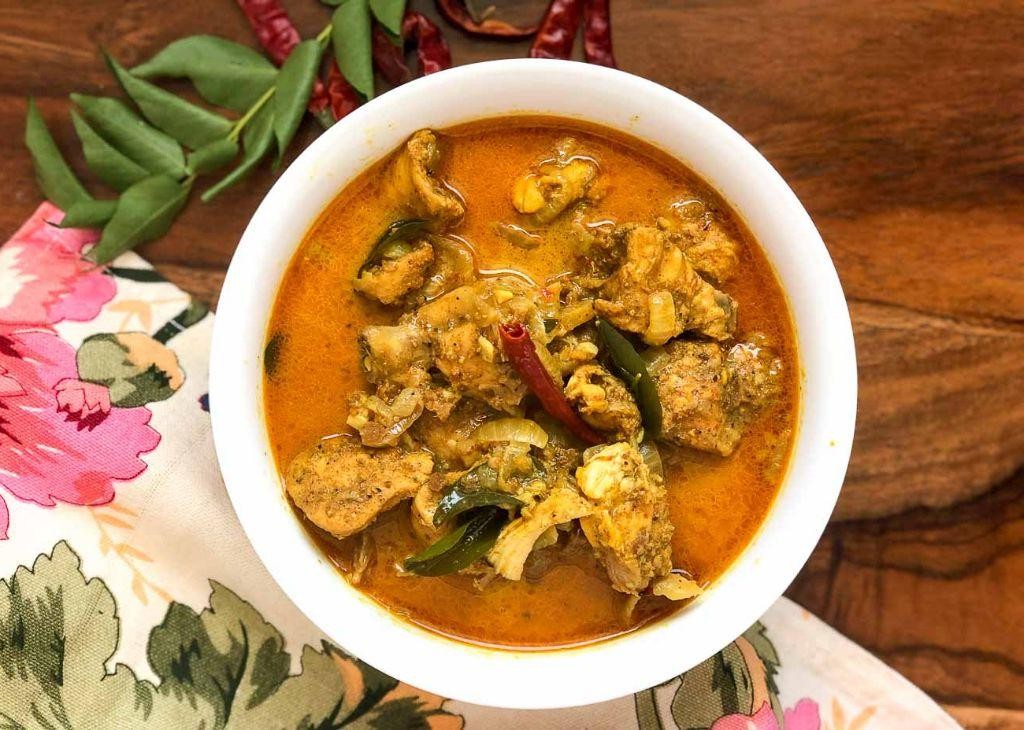
Kneading memories of distant kitchens into today’s quiet afternoon, this curry carries the warmth of monsoon evenings and generations of hands stirring pots. Sometimes the most comforting meals arrive not with fanfare, but with the gentle persistence of spices blooming in oil, a quiet alchemy that transforms humble chicken into something profound. Let this be your slow simmer, your moment of fragrant pause.
4
portions15
minutes55
minutesIngredients
– about 1.5 pounds of chicken thighs, bone-in for richer flavor
– a good glug of coconut oil, maybe 2 tablespoons
– one large yellow onion, thinly sliced
– 4 cloves of garlic, minced
– a thumb-sized piece of ginger, grated
– a couple of fresh green chilies, slit lengthwise
– 2 tablespoons of Sri Lankan roasted curry powder
– 1 teaspoon of turmeric powder
– half a teaspoon of chili powder, if you like extra heat
– a 14-ounce can of coconut milk
– a generous splash of water, about ½ cup
– a few fresh curry leaves
– a cinnamon stick, about 2 inches long
– salt, roughly 1.5 teaspoons to start
Instructions
1. Heat 2 tablespoons of coconut oil in a heavy-bottomed pot over medium heat until it shimmers.
2. Add the sliced onion and sauté for 8-10 minutes, stirring occasionally, until deeply golden and softened.
3. Stir in the minced garlic, grated ginger, and slit green chilies, cooking for 1-2 minutes until fragrant.
4. Add the chicken thighs and sear for 4-5 minutes, turning once, until lightly browned on both sides.
5. Sprinkle in 2 tablespoons of Sri Lankan roasted curry powder, 1 teaspoon of turmeric, and ½ teaspoon of chili powder, tossing to coat the chicken evenly.
6. Pour in the entire can of coconut milk and ½ cup of water, scraping the bottom of the pot to lift any browned bits.
7. Drop in the fresh curry leaves and cinnamon stick, then season with 1.5 teaspoons of salt.
8. Bring the curry to a gentle boil, then immediately reduce the heat to low.
9. Cover the pot and simmer for 35-40 minutes, until the chicken is tender and pulls easily from the bone.
10. Uncover and simmer for another 5-10 minutes if you prefer a slightly thicker sauce.
11. Remove from heat and discard the cinnamon stick before serving. Softened by its long simmer, the chicken falls from the bone into a gravy that’s both creamy and fiercely spiced. Serve it over steamed rice to catch every drop, or with a stack of roti for tearing and dipping into the golden pool.
Gotu Kola Sambol (Pennywort Salad)

Nestled among my collection of vibrant greens, gotu kola leaves whisper of ancient traditions and quiet afternoons. Their small, fan-shaped forms hold a subtle bitterness that mellows into something wonderfully complex when prepared with care. Today, I’m gently folding them into a sambol that feels like a quiet conversation with the earth.
1
servings15
minutesIngredients
– A couple of cups of fresh gotu kola leaves, washed and patted dry
– A small handful of finely diced red onion
– A splash of fresh lime juice, about 2 tablespoons
– A pinch of salt, roughly 1/2 teaspoon
– A dash of crushed red pepper flakes, maybe 1/4 teaspoon
– A tablespoon of shredded unsweetened coconut
Instructions
1. Place the washed gotu kola leaves on a clean cutting board and finely chop them into small pieces, about 1/4-inch in size, to help release their herbal aroma. 2. Transfer the chopped leaves to a medium mixing bowl and add the finely diced red onion. 3. Squeeze 2 tablespoons of fresh lime juice directly over the leaves and onion to brighten the flavors. 4. Sprinkle 1/2 teaspoon of salt evenly across the mixture to begin drawing out moisture. 5. Add 1/4 teaspoon of crushed red pepper flakes for a gentle heat that lingers. 6. Gently toss everything together with your hands or a spoon, massaging the leaves for about 1 minute until they slightly wilt and darken in color. 7. Fold in 1 tablespoon of shredded unsweetened coconut to add a subtle sweetness and texture. 8. Let the sambol rest at room temperature for 10 minutes to allow the flavors to meld together. Freshly made, this sambol offers a crisp, almost grassy texture with a bright, tangy kick from the lime and a whisper of heat. I love scooping it onto warm flatbread or pairing it with grilled fish for a meal that feels both grounding and invigorating.
Sri Lankan Dhal Curry (Parippu)

Holding this warm bowl of golden lentils, I remember how this simple curry became my quiet afternoon companion, its earthy aroma filling my kitchen with comfort on days when everything else felt rushed.
3
servings15
minutes33
minutesIngredients
– 1 cup of red lentils, rinsed until the water runs clear
– a generous glug of coconut milk, about 1 cup
– 1 medium yellow onion, finely chopped
– 3 garlic cloves, minced
– 1 tablespoon of coconut oil
– 1 teaspoon of turmeric powder
– ½ teaspoon of cumin seeds
– a couple of dried red chilies, broken in half
– a big pinch of salt
– 3 cups of water
Instructions
1. Rinse 1 cup of red lentils under cold running water in a fine-mesh strainer until the water runs completely clear, not cloudy. 2. Heat 1 tablespoon of coconut oil in a medium saucepan over medium heat until it shimmers. 3. Add ½ teaspoon of cumin seeds and 2 broken dried red chilies to the hot oil, and toast for about 30 seconds until the seeds pop and become fragrant. 4. Stir in 1 finely chopped medium yellow onion and cook for 5-7 minutes, stirring occasionally, until the onion turns soft and translucent. 5. Add 3 minced garlic cloves and cook for 1 more minute until the raw smell disappears and the garlic is golden. 6. Mix in 1 teaspoon of turmeric powder and stir for 30 seconds to toast the spices. 7. Tip: Toasting the spices in oil like this, called “blooming,” unlocks their full, deep flavor. 8. Pour the rinsed lentils into the pot along with 3 cups of water and a big pinch of salt. 9. Bring everything to a boil over high heat, then reduce the heat to low, cover the saucepan, and let it simmer for 20 minutes. 10. Tip: Don’t stir the lentils during this simmering time to prevent them from breaking down too much and becoming mushy. 11. After 20 minutes, check that the lentils are tender and have absorbed most of the water. 12. Stir in 1 cup of coconut milk and simmer uncovered for 5 more minutes until the curry thickens slightly. 13. Tip: For a creamier texture, you can lightly mash some of the lentils against the side of the pot with the back of your spoon before adding the coconut milk. 14. Remove the pot from the heat and let the curry sit for 5 minutes to allow the flavors to meld together. Soft and velvety with a subtle warmth from the chilies, this dhal cradles fluffy rice perfectly. I love scooping it up with torn pieces of warm naan or pairing it with a crisp cucumber salad for contrast.
Wambatu Moju (Brinjal/Eggplant Pickle)

Deep in the quiet of my kitchen, I find myself drawn to preserving, to the slow transformation of humble vegetables into something that holds time within its flavors. Today, it’s the deep purple eggplant, waiting to become Wambatu Moju, a pickle that feels like a whispered secret from another kitchen, another story.
3
servings15
minutes25
minutesIngredients
– a couple of medium eggplants (about 2 cups once chopped)
– a generous glug of coconut or vegetable oil (about 1/2 cup)
– a small handful of sliced red onion (about 1/2 cup)
– 3 cloves of garlic, thinly sliced
– a 1-inch piece of ginger, minced
– a couple of dried red chilies, broken in half
– a teaspoon of mustard seeds
– a teaspoon of turmeric powder
– a tablespoon of chili powder
– a big splash of vinegar (about 1/4 cup)
– a tablespoon of sugar
– a good pinch of salt (about 1 tsp)
Instructions
1. Cut the eggplants into 1-inch cubes, leaving the skin on for texture.
2. Heat the oil in a heavy-bottomed pan over medium heat until it shimmers, about 300°F.
3. Add the eggplant cubes and fry for 8-10 minutes, stirring occasionally, until they are golden brown and tender.
4. Use a slotted spoon to remove the eggplant, letting excess oil drip back into the pan, and set them aside on a plate lined with paper towels.
5. Tip: Frying in batches prevents steaming and ensures each piece gets properly crisp.
6. Reduce the heat to low and add the mustard seeds to the remaining oil in the pan.
7. Cook for 30 seconds until the seeds begin to pop and release their aroma.
8. Add the sliced onion, garlic, ginger, and broken dried red chilies to the pan.
9. Sauté for 4-5 minutes, stirring frequently, until the onions turn soft and translucent.
10. Sprinkle in the turmeric powder and chili powder, stirring for 30 seconds to toast the spices and deepen their flavor.
11. Tip: Toasting spices in oil unlocks their essential oils, making the dish more fragrant.
12. Return the fried eggplant to the pan, gently folding to coat each piece with the spiced onion mixture.
13. Pour in the vinegar and sprinkle the sugar and salt over everything.
14. Simmer on low heat for 5-7 minutes, stirring occasionally, until the vinegar reduces slightly and the flavors meld.
15. Tip: Let the pickle cool completely before storing—this allows the flavors to settle and intensify overnight.
16. Transfer the Wambatu Moju to a clean, dry glass jar and seal it tightly. Gently spiced and tangy, this pickle settles into a soft, almost melting texture with a subtle kick from the chilies. I love it tucked into a sandwich for a surprising bite or simply spooned over warm rice, where its sharp vinegar notes cut through the starch, making an ordinary meal feel quietly special.
Sri Lankan Coconut Roti
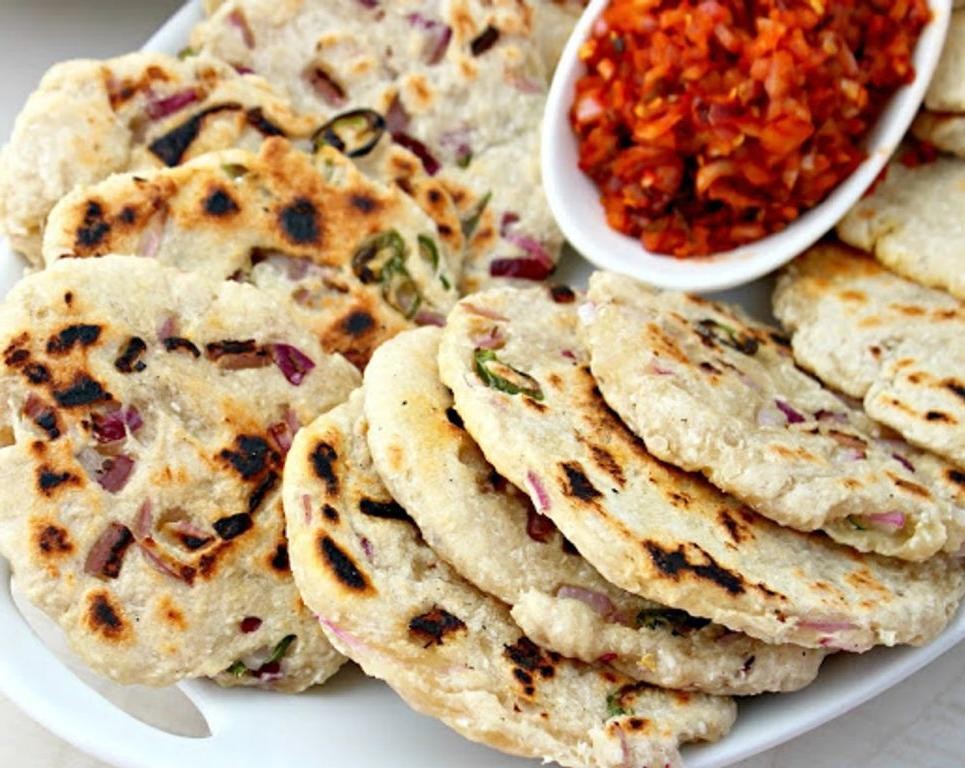
Kind of like finding an old photograph you’d forgotten about, this recipe brings back the warmth of shared meals and quiet afternoons. There’s something deeply comforting about the way coconut roti fills the kitchen with its earthy, toasted aroma, a simple bread that holds stories in every fold.
6
portions12
minutes48
minutesIngredients
– 2 cups of all-purpose flour
– 1 cup of finely grated coconut (the fresh kind, if you can find it)
– A generous pinch of salt
– About ¾ cup of warm water (just enough to bring it all together)
– A couple tablespoons of vegetable oil for cooking
Instructions
1. Combine 2 cups of all-purpose flour, 1 cup of finely grated coconut, and a generous pinch of salt in a large mixing bowl.
2. Gradually pour in about ¾ cup of warm water while mixing with your hands until a soft, slightly sticky dough forms. (Tip: If the dough feels too dry, add water 1 tablespoon at a time—it should come together without being tough.)
3. Knead the dough on a lightly floured surface for 5-7 minutes until smooth and elastic.
4. Divide the dough into 6 equal portions and roll each into a smooth ball.
5. Flatten each ball with your palms into a disc about ¼-inch thick. (Tip: If the dough springs back, let it rest for 5 minutes—this relaxes the gluten for easier shaping.)
6. Heat a couple tablespoons of vegetable oil in a skillet over medium heat (around 350°F).
7. Cook each roti for 3-4 minutes per side until golden brown spots appear and the edges look cooked through. (Tip: Press gently with a spatula—if it springs back, it’s ready to flip.)
8. Transfer cooked roti to a plate lined with a paper towel to absorb excess oil.
Buttery and flecked with coconut, each bite offers a tender crumb that gives way to subtle sweetness. Serve them warm with a drizzle of honey for breakfast, or tear pieces to scoop up spicy curries—their sturdy yet soft texture makes every meal feel like a quiet celebration.
Kottu Roti (Sri Lankan Street Food Stir-Fry)
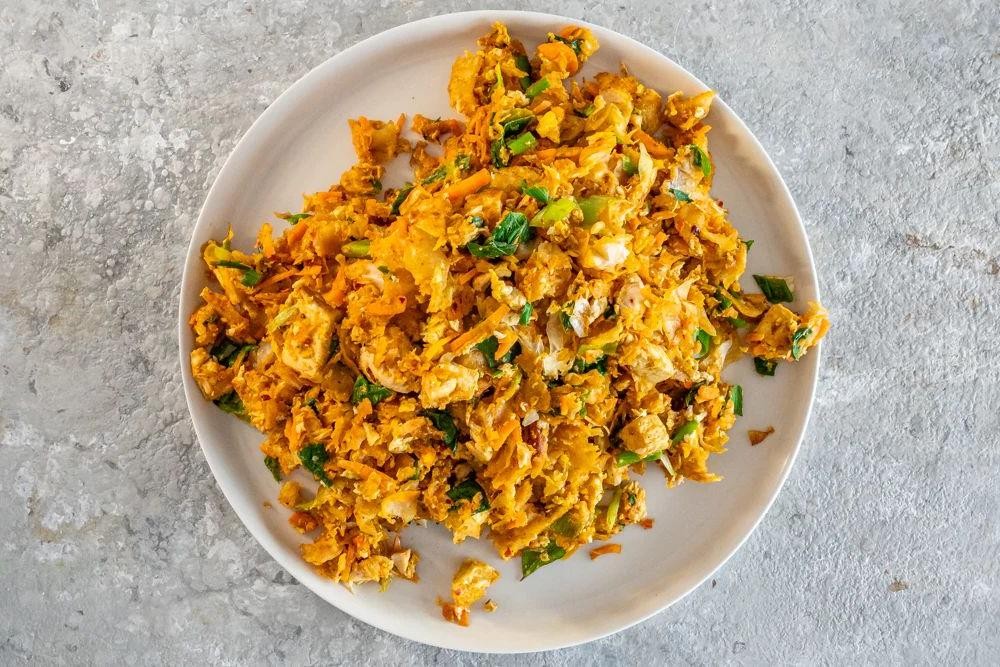
Cradling a warm plate of Kottu Roti takes me back to that humid evening in Colombo, the rhythmic clang of metal blades chopping against the griddle echoing through the bustling street, a comforting symphony of sizzle and spice that transforms simple leftovers into something magical.
2
servings15
minutes13
minutesIngredients
– a couple of cups of shredded roti or flatbread
– one large onion, thinly sliced
– two cloves of garlic, minced
– a big handful of shredded carrots
– a couple of cups of finely chopped cabbage
– two eggs
– a splash of vegetable oil
– a tablespoon of soy sauce
– a teaspoon of chili powder
– half a teaspoon of turmeric
– a pinch of salt
Instructions
1. Heat a large skillet or wok over medium-high heat and add a splash of vegetable oil, letting it shimmer for about 30 seconds.
2. Add the thinly sliced onion and minced garlic, stirring constantly for 2–3 minutes until the onion turns translucent and fragrant.
3. Push the onion and garlic to one side of the skillet and crack the two eggs directly into the empty space, scrambling them with a spatula for 1–2 minutes until fully cooked and broken into small curds.
4. Mix the scrambled eggs with the onions and garlic, then toss in the shredded carrots and chopped cabbage, stirring for another 3–4 minutes until the vegetables soften slightly but still have a bit of crunch.
5. Sprinkle in the chili powder, turmeric, and a pinch of salt, stirring for 30 seconds to coat everything evenly and toast the spices lightly.
6. Add the shredded roti to the skillet, pouring the tablespoon of soy sauce over it, and use two spatulas to chop and mix vigorously for 4–5 minutes until the roti is well-coated and heated through. Tip: The chopping motion helps the flavors meld and gives Kottu its signature textured look.
7. Reduce the heat to low and let the mixture sit for 1 minute to allow the edges of the roti to crisp up slightly. Tip: Don’t skip this step—it adds a delightful contrast to the soft interior.
8. Taste a small bite and adjust with more salt if needed, remembering that the soy sauce already adds saltiness. Tip: For extra heat, sprinkle a bit more chili powder at the end without cooking it further.
Kottu Roti cradles a beautiful chaos of soft, chewy roti mingled with crisp-tender veggies, all wrapped in a warm, earthy spice blend. Serve it straight from the skillet with a wedge of lime to brighten the flavors, or top it with a fried egg for a hearty breakfast twist that feels like a secret from the streets.
Hoppers (Sri Lankan Fermented Rice Pancakes)

Just now, as the afternoon light slants across my kitchen counter, I’m thinking about how some of the most comforting foods come from the simplest transformations—like these delicate, bowl-shaped pancakes that begin as just rice and time. They’re called hoppers in Sri Lanka, where they’ve been a breakfast staple for generations, their slightly sour, fermented flavor and crisp edges making them utterly unique. Making them feels like a quiet meditation, a slow unfolding of flavor that rewards patience with every tender, lacy bite.
2
pancakes15
minutes32
minutesIngredients
– 1 cup of raw white rice, soaked overnight
– A quarter cup of cooked rice, leftover from yesterday works perfectly
– A teaspoon of active dry yeast
– A tablespoon of sugar
– A half teaspoon of salt
– A quarter cup of thick coconut milk, the kind that comes in a can
– A splash of water, just enough to get the blender going
– A couple of tablespoons of neutral oil, for brushing the pan
Instructions
1. Drain the soaked raw white rice and add it to a blender along with the quarter cup of cooked rice, teaspoon of active dry yeast, tablespoon of sugar, half teaspoon of salt, and quarter cup of thick coconut milk.
2. Pour in a splash of water—just enough to help the blades move freely—and blend on high speed for 2 full minutes, until the mixture is completely smooth and has the consistency of a thin batter.
3. Transfer the batter to a large bowl, cover it loosely with a clean kitchen towel, and let it ferment in a warm spot (like on top of the refrigerator) for 8 to 12 hours, or until the surface is dotted with tiny bubbles and the batter has nearly doubled in volume.
4. Heat a small nonstick skillet or hopper pan over medium heat until a drop of water sizzles and evaporates immediately upon contact.
5. Use a pastry brush to lightly coat the inside of the hot pan with a thin layer of neutral oil, making sure to cover the bottom and curved sides evenly.
6. Give the fermented batter a gentle stir to reincorporate any separated liquid, then ladle about a quarter cup of it into the center of the pan.
7. Immediately lift the pan and swirl the batter in a circular motion so it coats the bottom and climbs about an inch up the sides, forming a thin, even layer.
8. Cover the pan with a lid and cook for 3 to 4 minutes, until the edges are golden brown and crisp, and the center is set but still tender.
9. Carefully slide a thin spatula under the hopper to release it from the pan, then transfer it to a plate.
10. Repeat steps 5 through 9 with the remaining batter, brushing the pan with more oil between each hopper to prevent sticking.
Crack an egg into the center of a hopper during the last minute of cooking for a classic Sri Lankan breakfast, or drizzle them with a bit of spicy sambal for a savory kick. Their texture is a wonderful contrast—crisp, lace-like edges giving way to a soft, slightly sour center that pairs beautifully with everything from curries to a simple sprinkle of sugar.
Kiribath (Coconut Milk Rice)
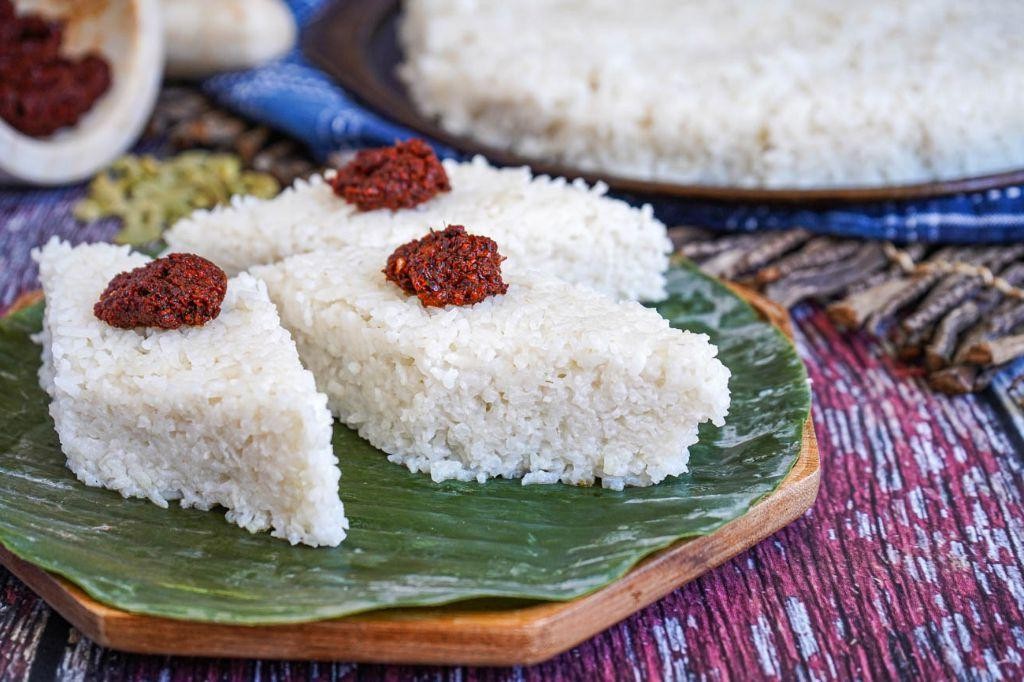
Lately, I’ve been craving the simple comfort of meals that feel like a warm embrace, the kind that reminds me of quiet mornings and gentle beginnings. Kiribath, this Sri Lankan coconut milk rice, has become my go-to when I need something that nourishes both body and soul with its creamy, soothing presence.
3
portions5
minutes32
minutesIngredients
– 1 cup of white rice (I prefer short-grain for extra creaminess)
– 1 can (about 13.5 ounces) of coconut milk
– A good splash of water, roughly 1 1/4 cups
– A generous pinch of salt, maybe 3/4 teaspoon
– A couple of cardamom pods, lightly crushed to release their aroma
Instructions
1. Rinse 1 cup of white rice under cold running water until the water runs clear, gently swishing it with your fingers to remove excess starch.
2. Combine the rinsed rice, 1 can of coconut milk, 1 1/4 cups of water, and 3/4 teaspoon of salt in a medium saucepan, stirring briefly to mix everything evenly.
3. Add 2 lightly crushed cardamom pods to the saucepan, letting them infuse the liquid as it cooks for subtle warmth.
4. Bring the mixture to a boil over medium-high heat, which should take about 5–7 minutes, watching for bubbles to break the surface consistently.
5. Once boiling, immediately reduce the heat to low, cover the saucepan with a tight-fitting lid, and simmer for 15 minutes exactly—this prevents the rice from burning and ensures even cooking.
6. After 15 minutes, turn off the heat and let the rice sit, covered and undisturbed, for another 10 minutes to allow the grains to fully absorb the liquid and become tender.
7. Fluff the rice gently with a fork to incorporate any remaining coconut milk, being careful not to overmix and turn it mushy.
8. For traditional kiribath, transfer the rice to a lightly oiled plate or tray, press it into an even layer about 1-inch thick, and let it cool for 5–10 minutes until set.
9. Cut the pressed rice into squares or diamonds while still warm for easy serving, using a sharp knife dipped in water to prevent sticking.
Kind of velvety and subtly sweet from the coconut milk, each bite melts into a soft, comforting texture that pairs beautifully with a spicy lentil curry or even just a drizzle of honey for breakfast. I love how it holds its shape when sliced, yet yields effortlessly to the spoon, making it a versatile base for both savory and sweet toppings.
Sri Lankan Cashew Curry
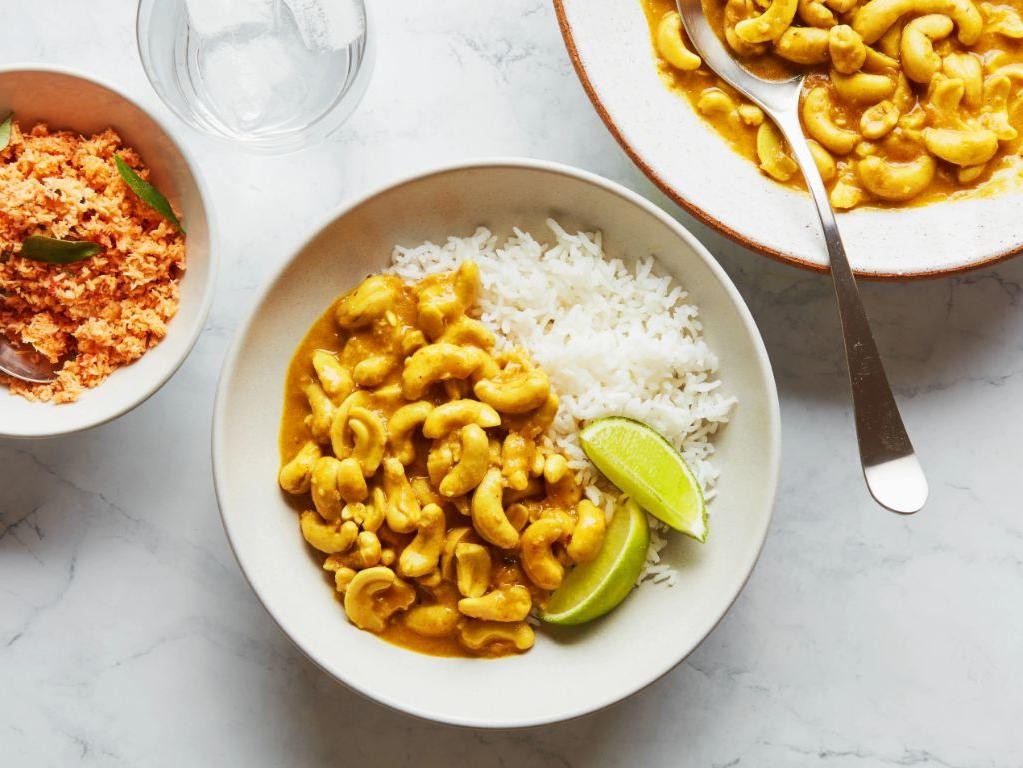
Evenings like this, when the light slants golden through the kitchen window, I find myself drawn to recipes that feel like a warm embrace, like this gently spiced Sri Lankan cashew curry. It’s a dish that simmers patiently, filling the house with the most comforting aroma.
3
servings15
minutes35
minutesIngredients
– A couple of tablespoons of coconut oil
– One large yellow onion, finely chopped
– Three cloves of garlic, minced
– A thumb-sized piece of fresh ginger, grated
– A couple of teaspoons of curry powder
– A pinch of turmeric
– One 13.5-ounce can of full-fat coconut milk
– Two cups of raw cashews
– A splash of water, if needed
– A generous handful of fresh cilantro, chopped
Instructions
1. Heat a couple of tablespoons of coconut oil in a large, heavy-bottomed pot or Dutch oven over medium heat until it shimmers.
2. Add one large finely chopped yellow onion and cook, stirring occasionally, for about 8-10 minutes until it becomes soft and translucent.
3. Stir in three minced garlic cloves and a thumb-sized piece of grated ginger, cooking for just one minute until fragrant to prevent burning.
4. Sprinkle in a couple of teaspoons of curry powder and a pinch of turmeric, stirring constantly for 30 seconds to toast the spices and deepen their flavor.
5. Pour in one 13.5-ounce can of full-fat coconut milk and two cups of raw cashews, stirring to combine everything.
6. Bring the curry to a gentle simmer, then immediately reduce the heat to low.
7. Cover the pot and let it simmer gently for 20-25 minutes, stirring occasionally, until the cashews are tender but still have a slight bite.
8. If the curry looks too thick at any point, add a splash of water to reach your desired consistency.
9. Remove the pot from the heat and stir in a generous handful of chopped fresh cilantro.
Now, the curry rests, its sauce luxuriously creamy and clinging to the tender, yielding cashews. I love it spooned over a mound of fluffy jasmine rice, the subtle sweetness of the nuts playing against the warm, earthy spices in the most quiet, satisfying way.
Devilled Prawns Sri Lankan Style

Often, when the afternoon light slants just so through my kitchen window, I find myself craving the kind of food that warms you from the inside out—something with a story. Today, that story tastes like the coastal kitchens of Sri Lanka, a memory of spice and sea carried on a simple plate of prawns.
4
servings15
minutes15
minutesIngredients
– A pound of fresh, large prawns, peeled and deveined but with the tails left on for a pretty hold
– A couple of tablespoons of coconut oil
– One large yellow onion, finely chopped
– Four cloves of garlic, minced
– A one-inch piece of fresh ginger, grated
– A tablespoon of raw, unroasted Sri Lankan curry powder
– A teaspoon of chili powder (the kind that brings a gentle warmth, not a fire)
– A half teaspoon of ground turmeric
– A generous splash (about a quarter cup) of thick coconut milk
– The fresh juice from half a large lime
– A small handful of fresh curry leaves
– A half teaspoon of salt
Instructions
1. Pat your prawns completely dry with a paper towel; this is the secret to getting a beautiful sear instead of them steaming in their own moisture.
2. Heat a couple of tablespoons of coconut oil in a large, heavy-bottomed skillet over medium-high heat until it shimmers, about 350°F.
3. Add the prawns in a single layer and sear them for exactly 90 seconds on one side until they turn pink and opaque about halfway up.
4. Flip each prawn and cook for another 60 seconds, then immediately transfer them to a clean plate.
5. In the same skillet, now over medium heat, add the finely chopped onion and sauté for 5-7 minutes until it turns soft and translucent.
6. Stir in the minced garlic and grated ginger, cooking for another 60 seconds until the raw smell disappears and the kitchen fills with fragrance.
7. Add the tablespoon of Sri Lankan curry powder, teaspoon of chili powder, and half teaspoon of turmeric to the pan, toasting the spices for 30 seconds while stirring constantly to wake up their oils and prevent burning.
8. Pour in the generous splash of coconut milk, scraping the bottom of the pan with your spoon to lift all the flavorful, browned bits—this is where the soul of the dish lives.
9. Let the sauce simmer gently for 2-3 minutes until it thickens slightly and the oil just begins to separate at the edges.
10. Return the seared prawns and any accumulated juices back into the skillet, tossing them gently to coat in the warm, spiced sauce.
11. Turn off the heat and stir in the fresh juice from half a lime and the small handful of curry leaves, letting the residual heat wilt the leaves and brighten the sauce.
12. Finally, stir in the half teaspoon of salt, tasting once to see if the balance of spice, tang, and salt feels right for you.
Perhaps what I love most is the tender give of the prawn against the slight resistance of its seared shell, all swaddled in a sauce that is at once creamy, earthy, and brightly acidic. I like to pile it over a simple mound of steamed jasmine rice, letting the grains soak up every last drop of that golden, fragrant gravy.
Lamprais (Dutch Burgher Recipe with Rice and Meat)

Folding back the pages of my grandmother’s handwritten cookbook, I rediscovered this Dutch Burgher treasure – a fragrant parcel of rice and spiced meats wrapped in banana leaves, carrying whispers of colonial kitchens and family gatherings long past.
2
portions25
minutes90
minutesIngredients
A couple of cups of basmati rice, a pound of beef stew meat cut into chunks, a good splash of coconut milk, two tablespoons of ghee, one large onion finely chopped, three cloves of garlic minced, a teaspoon each of coriander and cumin powder, half a teaspoon of turmeric, a couple of cardamom pods, one cinnamon stick broken in half, two dried curry leaves, a generous pinch of salt, and fresh banana leaves for wrapping.
Instructions
- Rinse 2 cups of basmati rice under cold water until the water runs clear, then soak it in fresh water for exactly 20 minutes to help it cook up fluffy and separate.
- Heat 2 tablespoons of ghee in a heavy-bottomed pot over medium heat until it shimmers, then add 1 chopped onion and cook for 5-7 minutes until translucent and fragrant.
- Add 3 minced garlic cloves and cook for 1 minute until golden, stirring constantly to prevent burning.
- Stir in 1 teaspoon each of coriander and cumin powder, ½ teaspoon turmeric, 2 cardamom pods, 1 cinnamon stick, and 2 dried curry leaves, toasting the spices for 30 seconds until deeply aromatic – this blooming step really unlocks their flavor.
- Add 1 pound of beef chunks and cook for 5 minutes, turning to brown all sides evenly.
- Pour in 1 cup of coconut milk and 1 cup of water, bring to a gentle boil, then reduce heat to low, cover, and simmer for 45 minutes until the beef is fork-tender.
- Drain the soaked rice and add it to the pot with the beef and a generous pinch of salt, gently folding to combine without breaking the rice grains.
- Add just enough additional water to cover the rice by about ½ inch, bring to a boil, then cover and cook on lowest heat for 15 minutes until the rice has absorbed all the liquid.
- Meanwhile, briefly pass fresh banana leaves over a gas flame for 10-15 seconds until pliable – this prevents them from cracking when folded.
- Place about 1½ cups of the rice and meat mixture in the center of each banana leaf, fold the leaf into a tight rectangular parcel, and tie securely with kitchen string.
- Steam the parcels in a steamer basket over boiling water for 20 minutes to allow all the flavors to meld together beautifully.
Unwrapping the warm banana leaf releases an incredible aroma that fills the kitchen with memories. The rice emerges perfectly separate yet infused with all the spiced meat juices, while the beef becomes meltingly tender against the subtle coconut background. I love serving these parcels still wrapped at the table, letting everyone experience that magical moment of opening their own little package of comfort.
Elavalu Kottu (Vegetable Kottu Roti)
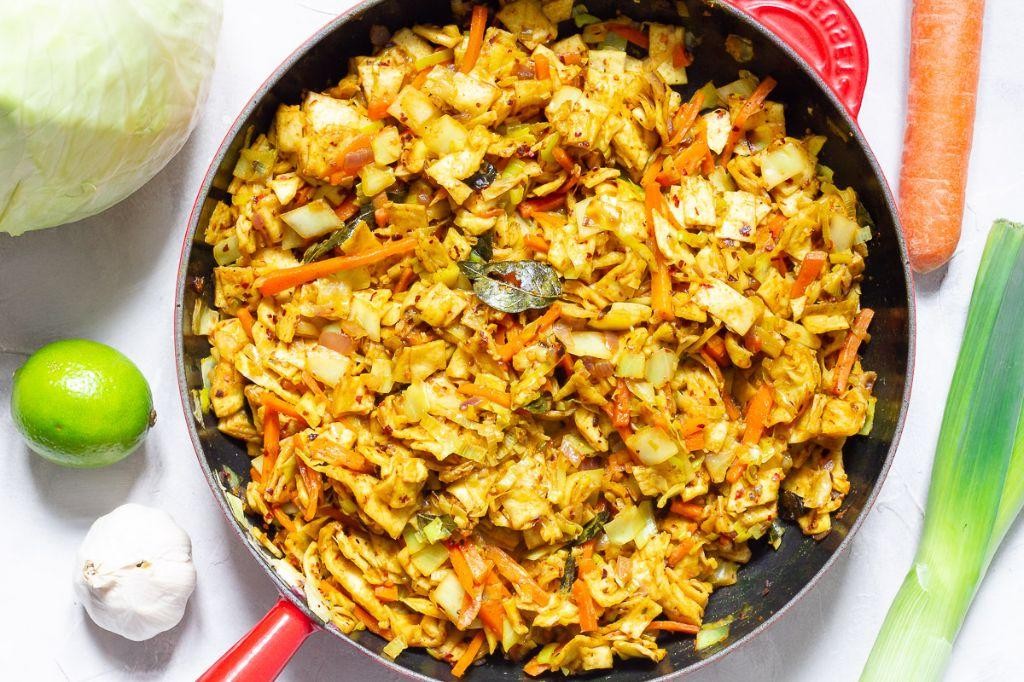
Lately, I’ve been craving the comforting clatter of a kottu griddle, that rhythmic chopping that transforms humble ingredients into something deeply nourishing. Elavalu kottu, with its soft vegetables and chewy roti, feels like a warm embrace on a quiet evening—simple, satisfying, and just what the soul needs.
2
servings10
minutes16
minutesIngredients
– 2 cups of shredded roti or flatbread
– A good glug of vegetable oil, about 2 tablespoons
– A small onion, thinly sliced
– A couple of garlic cloves, minced
– A handful of shredded cabbage
– A handful of chopped carrots
– A splash of soy sauce, about 1 tablespoon
– A pinch of chili flakes
– A sprinkle of salt
Instructions
1. Heat 2 tablespoons of vegetable oil in a large skillet or on a griddle over medium heat until it shimmers.
2. Add the thinly sliced onion and minced garlic, sautéing for about 3–4 minutes until the onion turns translucent and fragrant.
3. Tip in the shredded cabbage and chopped carrots, stirring occasionally for 5–6 minutes until the vegetables soften slightly but still have a bit of crunch.
4. Sprinkle in a pinch of chili flakes and a sprinkle of salt, mixing well to coat the vegetables evenly.
5. Add the 2 cups of shredded roti to the skillet, using two metal spatulas to chop and mix everything together for 2–3 minutes until the roti is warmed through and well combined.
6. Pour in 1 tablespoon of soy sauce, continuing to chop and mix for another 1–2 minutes until the sauce is evenly distributed and the kottu is lightly browned in spots.
7. Remove from heat and serve immediately. Velvety soft roti mingles with the crisp-tender vegetables, offering a gentle heat from the chili flakes and a savory depth from the soy sauce. Try scooping it up with extra roti or topping it with a fried egg for a cozy twist.
Sri Lankan Beetroot Curry
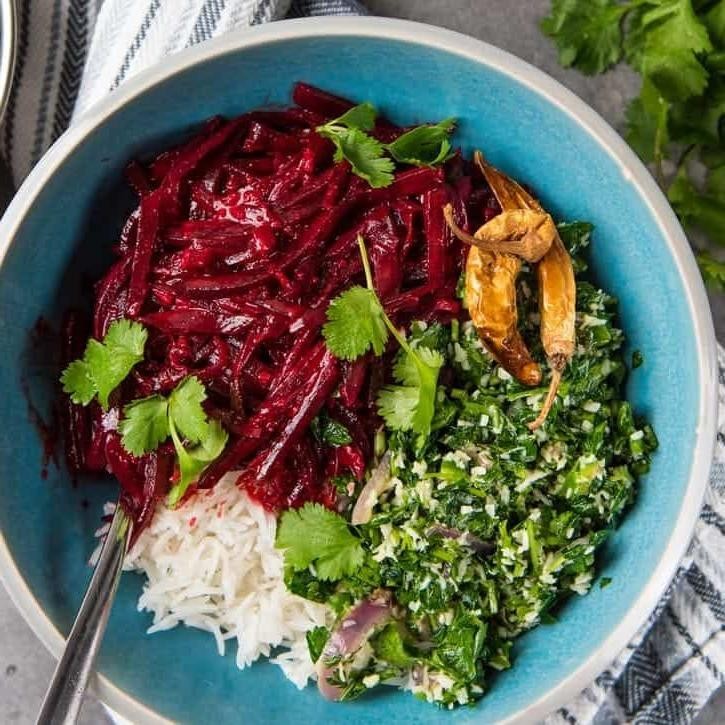
Unfolding the deep magenta hues of this curry feels like uncovering a hidden treasure, each spoonful revealing layers of earthy sweetness and gentle warmth that comfort the soul on quiet autumn evenings like this one.
3
servings15
minutes40
minutesIngredients
– a couple of medium beetroots, peeled and cubed
– a generous glug of coconut oil
– one small yellow onion, finely chopped
– two garlic cloves, minced
– about a tablespoon of freshly grated ginger
– a teaspoon of mustard seeds
– half a teaspoon of turmeric powder
– a teaspoon of cumin powder
– a pinch of cayenne pepper
– a 13.5-ounce can of coconut milk
– a cup of vegetable broth
– a splash of lime juice
– a small handful of fresh cilantro, chopped
Instructions
1. Heat a generous glug of coconut oil in a heavy-bottomed pot over medium heat until it shimmers.
2. Add a teaspoon of mustard seeds and wait until they begin to pop and dance in the oil, about 30 seconds.
3. Stir in one small finely chopped yellow onion and cook until translucent and fragrant, approximately 5 minutes.
4. Add two minced garlic cloves and about a tablespoon of freshly grated ginger, cooking for another minute until the raw smell disappears.
5. Sprinkle in half a teaspoon of turmeric powder, a teaspoon of cumin powder, and a pinch of cayenne pepper, toasting the spices for 30 seconds until aromatic.
6. Tip: Toasting spices briefly unlocks their essential oils, deepening the flavor profile without burning them.
7. Add a couple of peeled and cubed medium beetroots to the pot, stirring to coat them evenly with the spice mixture.
8. Pour in a 13.5-ounce can of coconut milk and a cup of vegetable broth, bringing everything to a gentle simmer.
9. Reduce the heat to low, cover the pot, and let the curry simmer for 25-30 minutes until the beetroot cubes are tender when pierced with a fork.
10. Tip: Resist stirring too often as this can break down the beetroot pieces—gentle occasional stirring preserves their texture.
11. Stir in a splash of lime juice and a small handful of chopped fresh cilantro just before removing from heat.
12. Tip: Adding lime juice at the end brightens the flavors and balances the richness of the coconut milk.
Rich and velvety, the curry clings to rice with a luxurious thickness, while the beetroot maintains a slight firmness that gives each bite substance. The earthy sweetness mingles with the subtle heat and citrus notes, making it wonderful served over jasmine rice or with warm flatbread for scooping up every last bit of the vibrant sauce.
Sri Lankan Seeni Sambol (Caramelized Onion Relish)
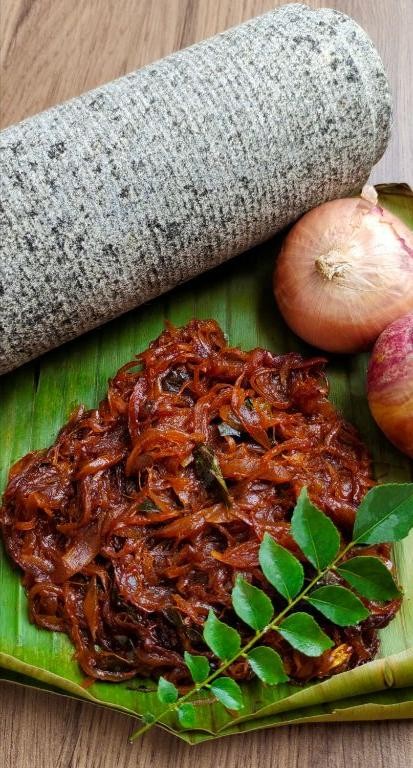
For years, I’ve kept this recipe tucked away in my kitchen journal, a sweet-savory memory of rainy afternoons and steaming rice. Found during a trip where spices hung thick in the air, it’s become my quiet comfort, the kind of dish that fills the kitchen with warmth and asks for nothing but patience.
5
servings10
minutes60
minutesIngredients
– 4 large yellow onions, thinly sliced
– 1/4 cup vegetable oil
– 2 tablespoons crushed red chili flakes
– 1 teaspoon ground cinnamon
– 1/2 cup granulated sugar
– a generous splash of tamarind paste mixed with 1/4 cup warm water
– 1 teaspoon salt
Instructions
1. Heat 1/4 cup vegetable oil in a heavy-bottomed skillet over medium-low heat until it shimmers lightly.
2. Add all the thinly sliced onions and stir to coat them evenly in the oil.
3. Cook the onions slowly, stirring every 5 minutes, for about 35–40 minutes until they turn deep golden brown and reduce significantly—this low heat prevents burning and builds flavor gradually.
4. Sprinkle in 2 tablespoons crushed red chili flakes and 1 teaspoon ground cinnamon, stirring for 1 minute until fragrant.
5. Stir in 1/2 cup granulated sugar and cook for 3–4 minutes, letting it melt and coat the onions fully.
6. Pour in the tamarind-water mixture and add 1 teaspoon salt, stirring to combine everything.
7. Simmer the mixture on low heat, uncovered, for 15–20 minutes until most liquid evaporates and the relish thickens—if it starts sticking, add a tablespoon of water and scrape the bottom.
8. Remove the skillet from heat and let the relish cool completely before transferring to a jar; cooling allows the flavors to meld and the texture to set properly.
Now, it settles into a jammy, glistening tangle that’s both fiery and sweet, perfect spooned over creamy avocado toast or tucked into a grilled cheese sandwich for a surprising kick.
Conclusion
More than just recipes, this collection offers a delicious journey to Sri Lanka from your own kitchen. We hope these authentic dishes inspire you to explore new flavors and create memorable meals. Don’t forget to leave a comment sharing your favorite recipe and pin this article to your Pinterest boards to save these culinary treasures for your next cooking adventure!
